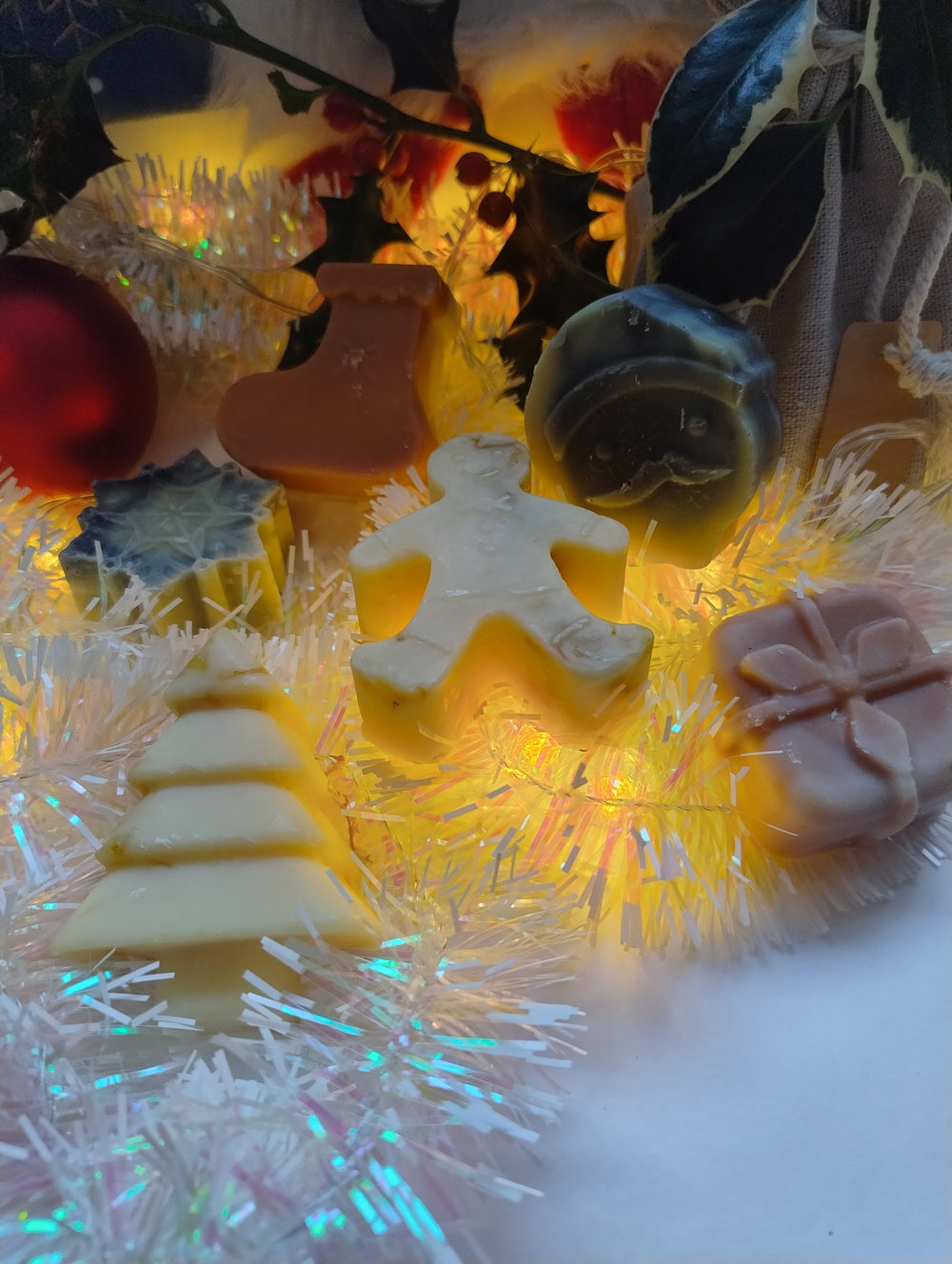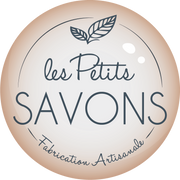Today, let's talk sa-po-ni-fi-ca-tion !
The technique I use is ancestral: saponification: it's simply the word used to say that we make soap.
I might as well tell you that I didn't invent anything: we found traces of soap more than 2,000 years BC!

- Concretely, what is saponification?
Very simply, it is this:
You mix fats with a base, and PAF! It makes you little soaps!
At Les Petits Savoine, I use cold saponification: I therefore mix fatty substances (vegetable oils, butters, beeswax, etc.) with sodium hydroxide (soda) to produce soap and glycerin.
- From... the... Soda?
Yes, quite simply because a base is needed for the saponification reaction. Don't worry, the soda does not stay in your soap, it reacts entirely with the fatty substances to create soap and glycerin.
Fat + Soda = Soap + Glycerin
To quickly explain: Mixing the fats and soda will cause a chemical reaction and our soap paste will form (it looks like custard, tend to be big mayo if you leave it lying around! Do you get the idea?), and heat up on its own.
I don't heat anything! I let the reaction be exothermic (it produces heat. And I can tell you that it heats up well in the mold!) After 24-48 hours, I unmold then cut the small soaps. Then I let them dry for several weeks.
This drying, essential, is called La Cure .
After its cure, the small soap is ready: I carry out the final tests, in particular the pH test, and the small soap can foam in your bathroom.
- So it's good for everyone, including the planet?!
In fact, cold process soap uses very little energy : little electricity, little water, no cooking. :-)
Cold process soap is therefore called this because we do not heat the soap paste: we do not intervene in the chemical reaction . Other methods consist of heating the mixture: we therefore intervene on the rise in temperature of the soap. Aleppo soap, for example, is made hot.
- and that's all?
Oh no ! A great advantage of cold saponification is Glycerin !
Glycerin is a real friend in cosmetic care: you come across it in your ointments, in your toothpaste, in your creams...
Produced during the chemical reaction of saponification, it is naturally, and in significant quantities, present in small soaps. Glycerin is nourishing and hydrating: it helps the skin to remain elastic, it protects it against external aggressions... We might as well tell you that it is very beneficial!
- Our soaps are super-fatted
Yes, Fat is Life! And Surgras is an additional guarantee of quality for a soap.
All our soaps contain between 6% and 8% supergreasing: the fats are in greater quantity than the soda (let me guess... between 6% and 8%? And Bingo!) and a quantity will therefore remain after the end of saponification.
Result for you? An even softer soap, and a real moment of relaxation in the shower!
Come and try the Little Soaps, I promise you won't be disappointed after swapping your liquid shower gel for a solid soap!

